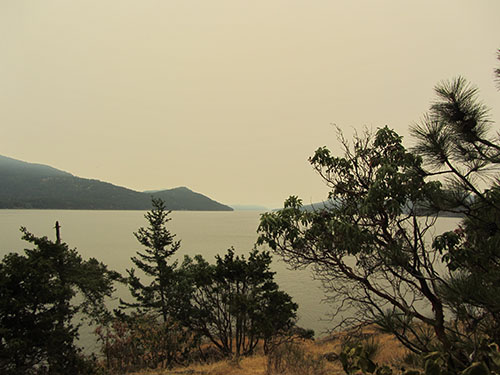Last weekend, Orcas Issues ran an interview article with State Transportation Commissioner Bob Distler, who lives on Orcas Island. Distler previewed the presentation the Transportation Commission would be giving on Monday, March 2 to the legislature’s Joint Transportation Committee. That presentation highlighted the to finance the State Ferries (WSF) capital plans, and an increased tariff for ferry-riders, above the 2.5 percent currently mandated, to make up for the current deficit in operations.
Following is more of that interview, in which Distler comments on Scenario A (of the Ferries’ Long-Range Plan), state Transportation needs, the Federal Stimulus package, and the State Budget.
“Our task was to come up with a sustainable solution – you can’t do that two years at a time,” said Distler of the Transportation Commission’s focus in the ferry financing project.
The focus on funding Scenario A came after basic agreement was reached on the numbers by WSF, the Transportation Commission, and the consultants involved: the Cedar River Group, which drafted the 2007study calling for more accurate figues, Opinion Research Northwest which conducted the ferry rider surveys, and Cambridge Systematics, which authored the current ferry funding study.
Distler adds that the Puget Sound Regional Council updated their traffic model out to 2030, and the Office of Financial Management projected figures for other counties beyond the Puget Sound region.
But Distler says, from his point of view, there are “huge unmet capital expenses [in Scenario A]. It doesn’t have the capacity to match the [projected] growth.” Even if the 1.5 percent growth per year is an accurate projection, Scenario A of the Long-Range plan doesn’t accommodate it.
Over 22 years, until 2030, a 1.5 percent growth rate comes to a 40 percent increase in traffic. “Scenario A can’t be accommodated without a significant increase in foot traffic,” says Distler.
Distler, along with Commissioners Dan O’Neal and Richard Ford, serves on a subcommittee of the Transportation Commission dealing with ferries.
Distler points out that, while he is a strong advocate for the ferries, the State Transportation Commission is charged to keep a state-wide focus.
They are working with their counterparts in Oregon and California on an “Alternative Fuel Corridor” from Baja, Mexico to Canada where motorists can fuel up on bio-fuels and other gasoline alternatives. The I-5 bridge from Washington to Oregon is in “terrible shape.” Tolls will continue on the Tacoma Narrows Bridge, which typically range from $3.5 million to $4 million per month. Tolls are also expected on the Evergreen Point Bridge as well as the I-90 Lake Washington Floating Bridge.
Stimulus
The made-in-Washington restriction on ferry construction blocks WSF from obtaining a large portion of the recently-passed Federal stimulus package. But there is $60 million – a significant amount” – in federal funding in the stimulus package for ferries nationwide that may be utilized for the Anacortes terminal project, and there is also funding for transit that could be devoted to the ferry terminals.
There is obvious pressure “on both sides” to change the bill that provides for all ferry construction to be within Washington state, and Distler points out that while ferry users may support federal funding and lower costs if there were more competition, there are difficult labor issues that support the current proviso. “One of the things you learn in Olympia is that everything has a political dimension,” Distler says.
Another transportation recipient of stimulus funding are the Alaskan Way Viaduct in Seattle, which is estimated to cost about 3 billion dollars, of which the state will contribute 2.4 billion. The City of Seattle, King County and Port of Seattle will also assume some of that cost.
Currently, the WSF operations budget operates at a $200 million per year shortfall – that’s a half million dollars a day, Distler points out. And the prospects for continued funding from the gas tax — which pays out 11 percent of its revenues to fund the ferries — continue to dim.
Beyond the short-term, Distler points out an inherent funding problem in funding ferries by gas tax revenues, which he says, “are slowly but surely going to fall.” His reasons for this claim are the trends towards state residents traveling less and using fuel-efficient cars, which, he emphasizes, is a good thing, but the result is “a persistent dogging shortfall as gas taxes decline.”






